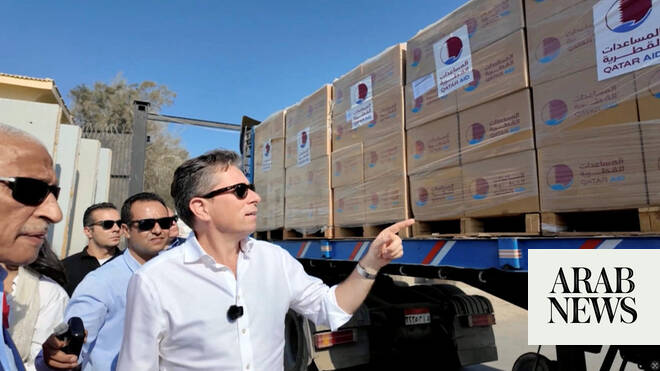The United Nations’ aid chief, Tom Fletcher, has described the monumental challenge of rebuilding Gaza’s shattered infrastructure, calling it a “massive, massive job” during his inspection tour of the war-torn territory on Saturday.
Fletcher, who travelled through the wreckage in a convoy of UN vehicles, visited the Sheikh Radwan wastewater treatment plant in northern Gaza City. He said much of the area, once bustling with life, has now been reduced to a wasteland after nearly two years of bombardment and fierce fighting between Israel and Hamas.
“I drove through here seven to eight months ago when most of these buildings were still standing. To see the devastation now is absolutely heartbreaking,” he said.
The visit came just over a week after a ceasefire brokered by former U.S. President Donald Trump took effect. Although the main Rafah border crossing with Egypt remains closed, nearly 950 trucks carrying food and supplies entered Gaza through Israeli checkpoints on Thursday.
Fletcher said the UN’s immediate focus is restoring basic services and dignity for residents. “We’ve got to get the power back on, rebuild sanitation systems, and deliver one million meals daily,” he said. The 60-day recovery plan includes restoring healthcare, setting up winter shelters, and helping hundreds of thousands of children return to school.
Despite the truce, tensions persist. Gaza’s civil defence agency said Israeli troops fired on a civilian bus, killing nine Palestinians, though the Israeli military claims the vehicle posed a security threat.
Meanwhile, the exchange of human remains continues under the ceasefire terms. Hamas has returned the final 20 surviving hostages and the remains of 28 others, including 75-year-old Eliyahu Margalit, whose abduction on October 7, 2023, sparked the war.
Israeli Prime Minister Benjamin Netanyahu vowed to continue recovering the bodies of all remaining hostages, while Hamas pledged to uphold the agreement and complete the prisoner exchange process.

